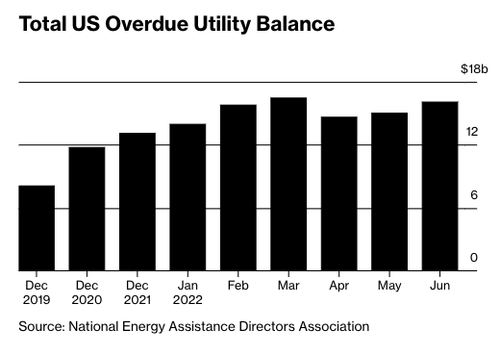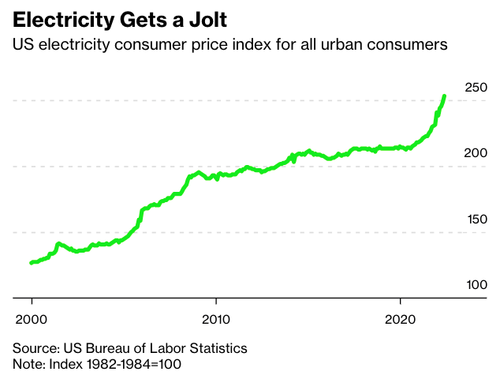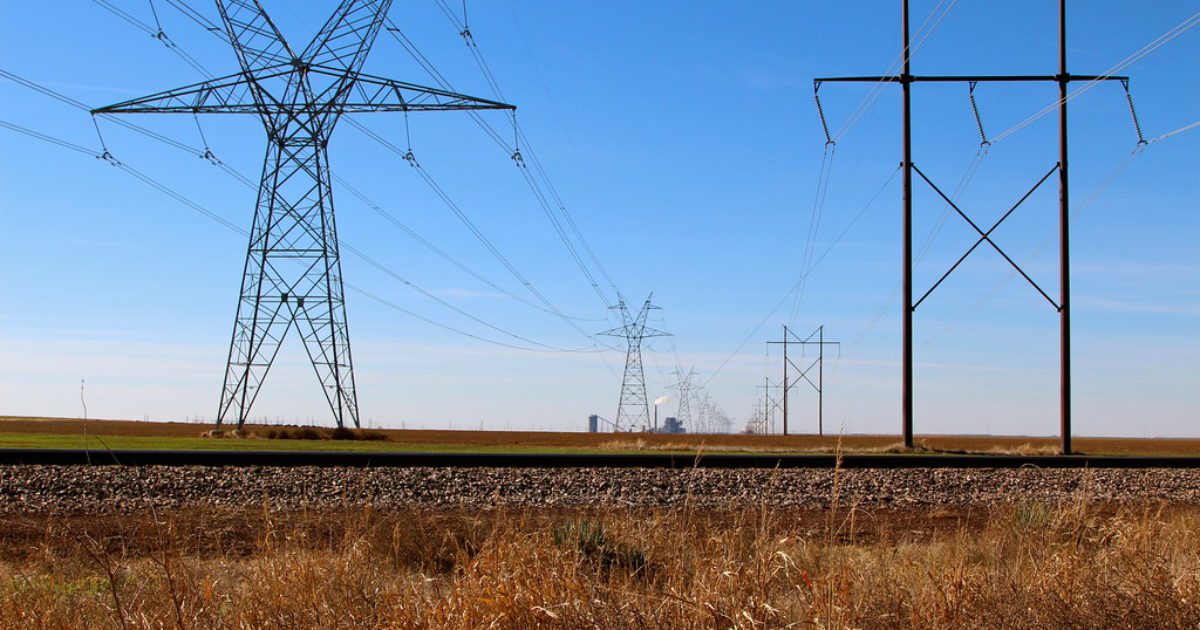At least 20 million households — or about 1 in 6 American homes — are behind on their power bills as soaring electricity prices spark what is said to be the worst-ever crisis in late utility payments, according to Bloomberg.
The outlet cited data from the National Energy Assistance Directors Association (Neada).
“Neada said electricity prices had increased significantly since 2020 after a decade of stagnation. The steep rise has resulted in billions of dollars in overdue power bills,” Zero Hedge noted.

Electricity costs are soaring. https://t.co/vkneMmxpYI
"More than 20 million Americans – about 1 in 6 households – are behind on their utility bills"We are told it's because the price of natural gas is soaring.
Utility stocks are the ONLY sector at all time highs. pic.twitter.com/96C8a3t73n
— Mac10 (@SuburbanDrone) August 24, 2022
Sad stat of the day:
Some 20 million US households — about 1 in 6 homes— have fallen behind on their utility bills as surging electricity prices have spurred the worst-ever crisis in late utility paymentshttps://t.co/bn8SGfb5n8 via @BW
— Robert Burgess (@BobOnMarkets) August 24, 2022

NatGas fuels about 40% of the US power grid and soared to the highest levels since 2008 on Tuesday.

From Zero Hedge:
Utility shutoffs have become more common across the US as some lower-tier households are thousands of dollars behind on their power bills.
Jean Su, a senior attorney at the Center for Biological Diversity, which tracks utility disconnections across the US, warned of a “tsunami of shutoff” as the highest inflation in forty years eats away wages and has financially devastated the working poor.
Adrienne Nice is one of those struggling Americans who is more than $3,000 behind on utility bills. Last month, she received a “final notice” from power company Xcel Energy Inc., who turned off the electricity to her studio apartment in Minneapolis as temperatures approached near triple digits.
Nice found it near impossible to save money for utility expenses that have doubled over the past year as food, shelter, and gas prices have also skyrocketed. Her low-paying job as a housecleaner has left her in energy poverty.
“I just don’t understand how electricity can be so high,” she said.
Across the country, power companies reported a surge in non-payment customers. California’s PG&E Corp said there had been a 40% jump in the number of residential customers behind on payments since February 2020. New Jersey’s Public Service Enterprise Group said customers at least 90 days late have risen 30% since March.
“People on the bottom, they can’t pay” their electricity bills, said Mark Wolfe, Neada’s executive director.
USA Today added:
The NEADA said those households owe a combined $16 billion in unpaid utility bills, double the pre-pandemic total. The average balance owed has climbed 97% since 2019, to $792, according to the NEADA.
Mostly to blame, according to Bloomberg, is a surge in electricity prices, propelled by the soaring cost of natural gas.
Household electricity charges in the U.S. were up 15.2 percent year-over-year in July, according to the Bureau of Labor Statistics Consumer Price Index.
Natural gas prices are up 30.5 percent over that same period.



Join the conversation!
Please share your thoughts about this article below. We value your opinions, and would love to see you add to the discussion!